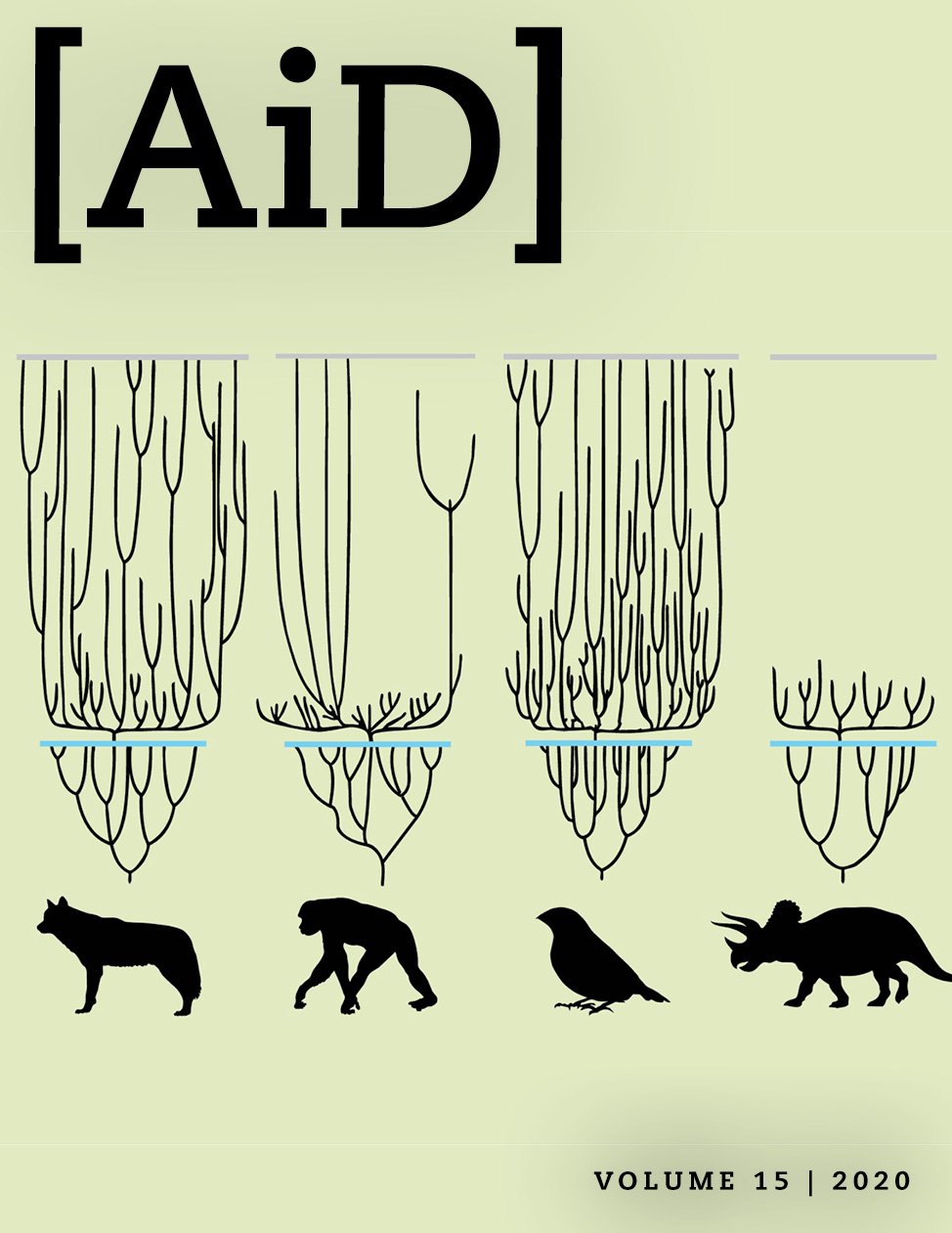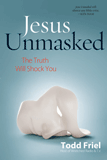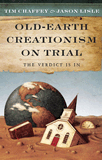
Adam, Jesus, and the Canon of Scripture
We may not think about this very much, but how would first-century Jewish people have viewed the ending of the Old Testament (Hebrew Scriptures)? Did they think it was a complete account? No, the Jewish people of that time did not view the redemptive account of the Old Testament as being complete, but as awaiting completion. As theologian N.T. Wright observes, “The great story of the Hebrew Scriptures was … inevitably read in the Second Temple period as a story in search of a conclusion.”1 It was not until after the death, resurrection, and ascension of Israel’s promised Messiah (Jesus Christ) that the conclusion to the great redemptive account of the Old Testament was eventually written down (40–90 AD) in the New Covenant documents and read among God’s people (cf. 2 Corinthians 3:6; 2 Thessalonians 2:15, 3:14; Revelation 1:11).2
There is good reason to believe that the threefold canonical structure of the Old Testament was established by the time of Jesus.
There is good reason to believe that the threefold canonical structure of the Old Testament, the Law (Torah), the Prophets (Nevi’im), and the Writings (Ketuvim), was established by the time of Jesus (see Luke 24:44). In Jesus’ day, the last book of the Old Testament probably would not have been Malachi but rather Chronicles, as several scholars have argued.3 In fact, Jesus’ own words point to Chronicles being the last book of the Old Testament:
Therefore also the Wisdom of God said, ‘I will send them prophets and apostles, some of whom they will kill and persecute,’ so that the blood of all the prophets, shed from the foundation of the world, may be charged against this generation, from the blood of Abel to the blood of Zechariah, who perished between the altar and the sanctuary. Yes, I tell you, it will be required of this generation. (Luke 11:49–51; cf. Matthew 23:35)4
Jesus would be paralleling the first martyr, Abel, with the last martyr in the Old Testament, Zechariah.
There is good reason to believe that the Zechariah Jesus mentions (in both Luke and Matthew’s Gospel) is the martyr “Zechariah son of Jehoiada” from 2 Chronicles 24:20–22. Jesus would be paralleling the first martyr, Abel (Genesis 4:8), with the last martyr in the Old Testament, Zechariah (2 Chronicles 24:22).5 Interestingly, in his commentary on Matthew’s Gospel, New Testament scholar John Nolland has noted:
The dying words of the priest Zechariah in 2 Chronicles 24:22 (‘May Yahweh hear and avenge’) … match the blood of Abel crying out from the Ground (Gen 4:10). If the right Zechariah has been identified, then the Gospel tradition is probably the earliest indication that, as was true later, 2 Chronicles was placed last in the Hebrew Bible.6
To end the Old Testament with the book of Chronicles would have been very telling. Even though Israel had been brought back from the Babylonian exile into the Promised Land, as Ezra and Nehemiah attest, ending the Old Testament with Chronicles was basically a way of saying that the return from exile was a physical one, but not a spiritual one. God was not finished with Israel; they were still awaiting their ultimate redemption through their promised Messiah. This would have put the first-century Jewish people in a state of anticipation that God’s Davidic King was still on his way (cf. Luke 2:25, 38; John 1:41). Seeing Chronicles as the last book of the Old Testament is also significant, as it would mean that the Old Testament begins and ends with a focus on Adam (Genesis 2:4-3:24, 5:1; 1 Chronicles 1:1). Chronicles was written to the Israelites who returned from the Babylonian exile in the sixth and fifth centuries. The purpose, then, of placing Adam at the beginning of Israel’s genealogical record is so that “Israel could arrive at an accurate self-perception only by understanding its place in relationship to the first parents and, indeed, to creation itself.”7 Chronicles begins with Adam but focuses on the Davidic reign. Chronicles is a fitting end to the Old Testament because it is still expecting the Davidic King, putting the reader in anticipation of the one who will redeem God’s people. This was ultimately fulfilled in the person of our Lord Jesus Christ (Matthew 21:5). It is fitting then that Matthew’s Gospel starts with a genealogy focused on David (Matthew 1:2–17), as the only other book in the Bible to start with a genealogy and have a Davidic focus is Chronicles (1 Chronicles 3:1–24).8
The theological importance of Adam to the narrative of the New Testament is seen in the opening verse of Matthew’s Gospel: “The book of the genealogy of Jesus Christ, the son of David, the son of Abraham” (Matthew 1:1). These words “the book of the genealogy” (Βίβλος γενέσεως, Biblos geneseōs) occur only twice in the Greek translation of the Old Testament (LXX), in Genesis 2:4 and 5:1. In their massive technical commentary on the Gospel of Matthew, critical New Testament scholars W.D. Davies and Dale Allison understand Matthew 1:1 to be the title for the entire gospel, in which case γένεσις (genesis) means either “history” or “genesis.”9 Davies and Allison interpret Matthew 1:1 to mean “Book of the New Genesis wrought by Jesus Christ, son of David, Son of Abraham.” Commenting on the significance of the words “the book of the generations,” they state:
Gen. 5:1–32 … recounts in addition the creation of Adam and Eve … So for those acquainted with the Greek version of Genesis, Βίβλος γενέσεως would likely have brought to mind more than the genealogical table of Adam. It would probably have sent thoughts back to the primeval history in general. This in turn suggests that Matthew might have opened his gospel as he did in order to draw a parallel between one beginning and another beginning, between the creation of the cosmos and Adam and Eve on the one hand and the new creation brought by the Messiah on the other.10
Just as the Old Testament begins and ends with Adam, so the New Testament begins and ends with the last Adam.
The Gospel of Matthew begins by presenting us with the coming of the last Adam, Jesus the Messiah. Just as the Old Testament begins and ends with Adam, so the New Testament begins (cf. Mark 1:1;11 John 1:1–3) and ends with the last Adam (Revelation 1–22). The New Testament authors clearly saw the coming of Jesus as corresponding to the creation account in Genesis 1 (John 1:1–5; 2 Corinthians 4:5–6). The Apostle Paul even tells us that those who have been reconciled to God (the Father) through the redemptive work of the last Adam are “new creations” (2 Corinthians 5:17; Galatians 6:15). It is necessary to understand the first Adam before we can properly understand the “last Adam,” as the New Testament intentionally ties the two together (see Luke 3:23–38; Romans 5:12–21; 1 Corinthians 15:21–22, 45). The first Adam was supernaturally given life by God, but through his disobedience, he brought death into the world, and the whole creation was cursed (Genesis 2:7, 17, 3:17). But the last Adam came supernaturally into the world and through his perfect life of obedience, even to the point of death, brought life into the world and reconciled creation back to himself (Romans 5:18–19; Colossians 1:20). Both the first Adam and the last Adam are unique historical individuals who knit the redemptive theme of Scripture together.
Answers in Depth
2020 Volume 15
Answers in Depth explores the biblical worldview in addressing modern scientific research, history, current events, popular media, theology, and much more.
Browse VolumeFootnotes
- N.T. Wright, The New Testament and the People of God (Minneapolis, MN: Fortress Press, 1992), 217.
- There is a link between the concept of covenant and written texts being read to God’s people (Exodus. 24:7; Deuteronomy 4:13–14).
- Roger T. Beckwith, The Old Testament Canon of the New Testament Church and Its Background in Early Judaism, (Eugene, OR: Wipf and Stock, 2008), 110-180; Michael J. Kruger, The Question of Canon: Challenging the Status Quo in the New Testament Debate (Westmont, IL: InterVarsity Press, 2013), 47–77.
- Although the parallel text in Matthew 23:35 refers to “Zechariah the son of Berechiah” (Zechariah 1:1), there is good reason to believe that the martyr in mention is “Zechariah son of Jehoiada” (2 Chronicles 24:20-22). Scholar and apologist Michael L Brown explains why “Zechariah son of Jehoiada” is probably in view: “What does the textual data suggest in the case of Matthew 23:35? The evidence is significant. First, there are some Greek manuscripts that preserve the reading “Zechariah son of Jehoiada.” While these manuscripts are in the very clear minority, and while it is possible that they reflect a later scribal correction to the original text, their witness is still of interest. Second, and more importantly, there is a statement from Jerome, a leading Gentile Christian scholar (331-420 C.E.) stating that the Nazareans, referring to one of the original groups of Jewish followers of Yeshua [Jesus], had a Hebrew text of Matthew that read here Zechariah son of Jehoiada; see Jerome’s commentary to Matthew 23:35. Given the fact that there are numerous statements from the early church pointing to an original Hebrew Matthew—or, at the least, a Hebrew version used by some of the early Messianic Jews . . . the commentary of Jerome would point to the possibility that the original reading was Zechariah son of Jehoiada and that the error first occurred in the Greek text of Matthew . . . Note also the parallel passage in Luke 11:51 simply reads, “from the blood of Abel to the blood of Zechariah, who was killed between the altar and the sanctuary.” So, it is very possible that an early scribe copying the words “Zechariah son of Jehoiada” wrote instead, “Zechariah, etc.” (or, simply, “Zechariah as in Luke 11:51), which was later mistakenly filled out as “Zechariah son of Berechiah,” erroneously becoming the dominant textual tradition . . . In the case of Matthew 23:35, we have Greek manuscripts of Matthew as well as references to ancient Hebrew manuscripts of Matthew that may preserve the accurate, original reading. This, then, would completely eliminate the problem.” [Michael L Brown, Answering Jewish Objections to Jesus: New Testament Objections Volume Four (Grand Rapids, Michigan: Baker Books, 2007), 114.] But even if “Berechiah” is the correct and original rendering in Matthew 23:35, this does not indicate a contradiction. It should be noted that “son of” in Hebrew and Greek can mean son or grandson or even a more distant relative (e.g., Jesus, the son of David, the son of Abraham—as in Matthew 1:1, and the sons and grandsons of Jacob are called “the sons of Israel” [Jacob’s second name] in Genesis 46:8–14). If Jehoiada’s father (or grandfather, etc.) was named Berechiah, then “Zechariah son of Berechiah” is a completely valid rendering for a descendant of Berechiah. It should be noted that the name Berechiah appears to be a somewhat popular name among the Israelites as there are five mentioned in Scripture (1 Chronicles 3:20, 9:16 and 15:17; 2 Chronicles 28:12; Zechariah 1:1). The two Berechiahs in 1 Chronicles 9:16 and 15:17 are both Levites, and 1 Chronicles 15:23 mentions that the latter one was a doorkeeper for the Ark of the Covenant under King David.
- Darrell L. Bock, Luke 9:51–24:53: Baker Exegetical Commentary on the New Testament Volume 2, (Ada, MI: Baker Academic, 1996), 1123–1124; Craig S. Keener, The Gospel of Matthew: A Socio-Rhetorical Commentary (Grand Rapids, MI: Eerdmans, 2009), 556–557.
- John Nolland, The Gospel of Matthew: A Commentary in the Greek Text, New International Greek Testament Commentary (Grand Rapids, MI: Eerdmans, 2005), 947.
- Eugene H. Merrill, Everlasting Dominion: A Theology of the Old Testament (Nashville, TN: B&H Academic, 2006), 167.
- This section is influenced by Kruger, The Question of Canon, 47–154.
- W. D. Davies and Dale C. Allison Jr., Matthew 1–7: International Critical Commentary (Edinburgh, UK: T&T Clark, 2004), 153.
- Davies and Allison, Matthew 1–7, 150.
- The gospel of Mark starts with the words: “The beginning of the good news about Jesus the Messiah, the Son of God” (Mark 1:1). The word “beginning” (archē) “recalls the opening words of Genesis, and Mark writes about a new beginning in salvation history that God inaugurates”. David E. Garland, A Theology of Mark’s Gospel: Biblical Theology of the New Testament (Grand Rapids, Michigan: Zondervan, 2015), 101. This new beginning comes about through the authoritative message of the apostolic proclamation of the “gospel” concerning Jesus being declared to be the Son of God (see Mark 1:11, 9:7, 14:61, 15:39).
Recommended Resources

Answers in Genesis is an apologetics ministry, dedicated to helping Christians defend their faith and proclaim the good news of Jesus Christ.
- Customer Service 800.778.3390
- © 2024 Answers in Genesis




